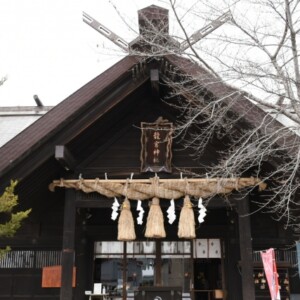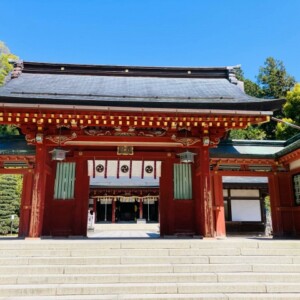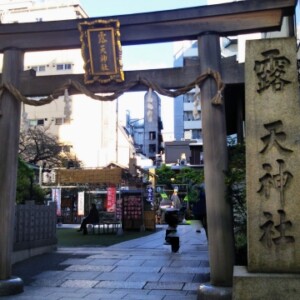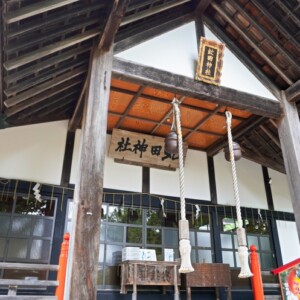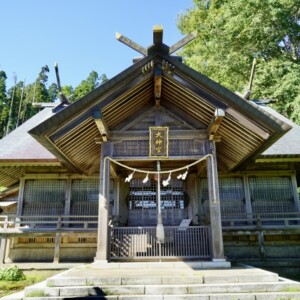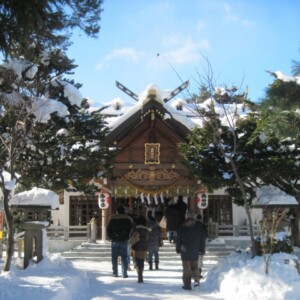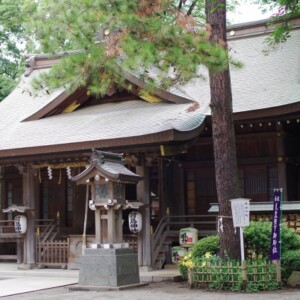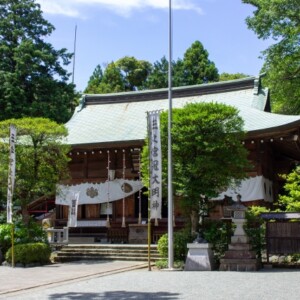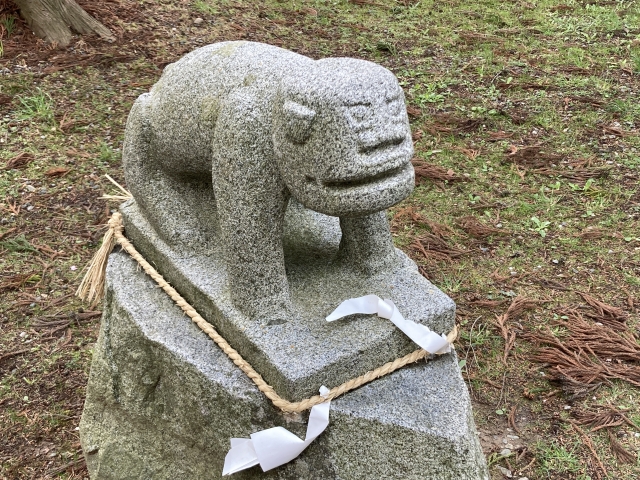
Morioka Tenmangu Shrine|A complete guide to the charms of this historic shrine of learning, the famous guardian dogs associated with Takuboku, and information on visiting the shrine.
Morioka Tenmangu Shrine, quietly perched on a small hill in Morioka City, is a historic shrine dedicated to Sugawara Michizane, a well-known god of learning. It is known as the place where Ishikawa Takuboku enjoyed walking and reading in his youth, and the lovable and unique guardian dogs on the shrine grounds are the talk of the town. Why not spend a peaceful moment in this quiet space where history and literature come alive while enjoying the view of the Morioka cityscape?
Morioka Tenmangu Shrine Overview and Basic Information
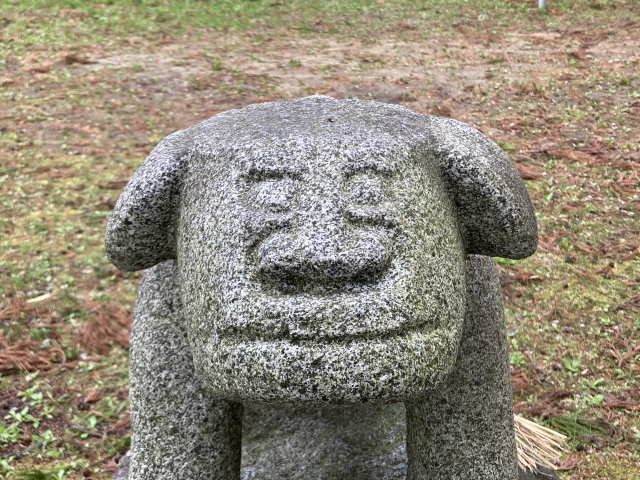
Morioka Tenmangu Shrine is located on Tenjinzan Mountain in Shinjo-cho, Morioka City, Iwate Prefecture, and its main deity is Sugawara no Michizane, who is revered as a god of learning and literature. Located on the east side of Morioka Castle, the shrine grounds offer an excellent location from which to view the entire Morioka cityscape. Even today, many students visit the temple to pray for success in entrance examinations, making it a sacred place of learning that continues to be loved by the local community.
History and Origin
The date of Morioka Tenmangu Shrine’s founding is not clear, but it is recorded that the shrine was relocated to its current location in 1679 (Enpo 7). It is assumed that this ancient shrine has been enshrined by the Morioka feudal lord, the Nanbu clan, since the Sanno period, and has a venerable history of more than 340 years.
Before Tenmangu Shrine was built, there was a residence called Hanagakidate built by vassals of the Shiba clan in the Muromachi period (1336-1573) in this area. The present main shrine was built in the main part of the Hanagakikan, and old coins and other items found in the shrine grounds are thought to be relics from that period. During the Edo period (1603-1867), the shrine was worshipped as the guardian of Morioka Castle and as a place of worship for those wishing to achieve academic success.
Since the Meiji era (1868-1912), the temple has had a strong connection with literary figures, and is known as a strolling spot that Takuboku Ishikawa frequented when he was a student at Morioka Junior High School. Takuboku called this place “Tenjinzan” (Mt. Tenjin), and it is known as a memorable place of his youth where he spent a lot of time reading and contemplating.
The God of Gods and Benefits for Academic Pursuits
Sugawara no Michizane, the main deity of the shrine, was a scholar, politician, and Chinese poet of the Heian period. He was a scholar and politician as well as a Chinese poet during the Heian period (794-1185), and his academic talent was highly valued by the Imperial Court. He was promoted to the position of Minister of the Right, but due to a political dispute, he was transferred to Dazaifu and died there.
After his death, a series of natural disasters in the capital were attributed to the work of Michizane’s grudge spirit, and Tenmangu shrines were built throughout the country to appease his spirit. As time went by, the fear of Michizane as a grudge spirit faded away, and rather his academic achievements during his lifetime came to attract attention, and he came to be widely worshipped as a “god of learning.
Morioka Tenmangu Shrine is believed to bring blessings for a wide range of wishes, centering on prayers for academic achievement and success in school, as well as for prosperous business, safety in the home, healing of illness, and protection from bad luck. Especially during the examination season, many students and their parents visit the shrine, and many ema (votive picture tablet) wishing for success are dedicated in the precincts of the shrine.
Morioka Tenmangu Shrine Highlights
Morioka Tenmangu Shrine is attractive because of the many unique attractions scattered throughout its historic precincts. The literary value associated with Ishikawa Takuboku, the beautiful natural scenery, and the stone structures with a long history are in harmony, creating a unique atmosphere that cannot be experienced anywhere else.
Unique guardian dogs loved by Ishikawa Takuboku
The most famous attraction of Morioka Tenmangu Shrine is a pair of unique guardian dogs. They are also known as “human face komainu” because of their charming human-like expressions, which are very different from those of ordinary komainu. These komainu were carved and dedicated in June 1903 by Genjiro Takahata, a stonemason from Kamishoji, Morioka City, in gratitude for the healing of his illness.
Ishikawa Takuboku called this guardian dog “Ishima” (stone horse) and loved it. In his novel “Funeral Row”, he wrote, “The face looks as if it says, ‘I have not known whether the world is to the west or to the east since I was born. In those days, the guardian dogs were placed directly on the ground, and children used to play with them by riding on horseback, which Takuboku affectionately called “Ishima”.
Today, the guardian dog sits on a stone pedestal on which Takuboku’s tanka poems are engraved. The right pedestal is inscribed with the poem “Natsu kuritsu nakasha no sha no ishima mo sweatiru hi narimu kimi wo yumemimu” and the left pedestal with the poem “Matsu no kaze yoru hibiki nuno hito wa nyuunu hito wa nyuunu yama no shisha no ishima no mi ni”, making it a precious cultural heritage that combines literature and stone art.
Charming Nature and Stone Art in the Precincts of the Shrine
In the precincts of the shrine, there is a huge granite rock about 2 meters high and 5 meters wide called “Qianyongseok. It is also called “Ishiwaribai” (meaning “split rock plum tree”) because plum trees grow wild in the cracks of the rock. Morioka City has many places of interest related to megaliths, such as Ishiwari Cherry Blossoms and Mitsuishi Shrine, and the Ishiwari Ume is one of them and is carefully protected.
The natural beauty of the shrine grounds changes with the seasons, and is especially beautiful in spring when the plum blossoms are in full bloom. The view from the precincts of the temple, which is located on a small hill, is also magnificent, with the city of Morioka and as far as Mt. Morioka, where Takuboku Ishikawa and Kenji Miyazawa spent their youth.
There is also a stone statue of a petting cow in the precincts of the shrine, which is familiar to visitors as a symbol of Tenmangu Shrine. It is associated with the deep connection between Sugawara Michizane and the cow, and there is a belief that stroking the same part of the body as the bad part will cure the illness.
Monuments of Historical Value
Several monuments related to Takuboku Ishikawa are located in the precincts of the temple, making it a valuable spot for literature fans. A total of four monuments can be seen here, including a large stone monument inscribed with Takuboku’s handwriting, a guardian dog pedestal, and a fox pedestal, each with a song inscribed on it. These monuments are the third of their kind in Japan, and are highly valued for their historical value.
The haiku monument of Matsuo Basho is also one of the highlights in the precincts of the temple. A stone pillar with a haiku inscribed on it reads, “Old pond, frogs jump in, sound of water, O Basho,” and its base is decorated with a lovely stone frog sculpture. It is a precious space where visitors can simultaneously remember a haiku master of the Edo period and a poet of the Meiji period, both literary figures of different eras.
A monument erected in recent years commemorates the 90th anniversary of the founding of the Morioka Sugakukai. The inscription of “Morioka Tenmangu Shrine” on the monument was handwritten by former Prime Minister Shinzo Abe, and has become a popular topic of conversation. Mr. Abe is said to be a descendant of the Abe clan that ruled the six counties of Mutsu, an interesting episode that reminds us of the historical ties with the Morioka area.
Guide to Prayer and Worship
At Morioka Tenmangu Shrine, it is important to worship wholeheartedly in the correct manner, paying respect to the god of learning. The grounds of the shrine are rich in nature and quiet, and visitors can feel the fragrance of history and literature as they take a leisurely stroll.
Worship Etiquette and Manners
Visiting Tenmangu Shrine is done in accordance with general shrine etiquette. First, bow as you pass through the torii gate, and walk down the approach to the shrine, avoiding the center of the path. After purifying your body and mind at the water fountain, you should pray in front of the hall of worship in the manner of “ni-ai-ni-hate-i-hai” (two claps, one hand, one bow).
When praying for academic achievement and success in school, it is recommended to clearly state your specific goals and wishes in your mind. At Tenmangu Shrine, in particular, it is believed that by praying with determination for continued effort, you will receive the blessings of Sugawara no Michizane.
When strolling in the precincts of the shrine, quietly admire the komainu (guardian dogs) and the poem monument loved by Takuboku Ishikawa, and remember to be considerate of other worshippers when taking photographs. Please refrain from touching or climbing up the stone and stone-wari plum trees, as they are carefully protected as natural heritage sites.
Red Seal and Good Luck Charm Information
Morioka Tenmangu Shrine offers red seals as a souvenir of your visit. The shrine office is open from 9:00 a.m. to 5:00 p.m., and the seals are carefully written. The red seal is stamped with the seal of “Morioka Tenmangu Shrine” and the seal of “Tenma Daijizaitenjin,” which represents Sugawara no Michizane, and is a good souvenir of your visit.
A variety of good luck charms and ema (votive picture tablet) are also available, and charms for academic achievement and success in school are especially popular. The “Gokaku Shogi Piece” strap, which is good luck for students preparing for entrance exams, has become a topic of conversation because the back of the Kakugyo of Shogi is “Gou”, which means “going to pass the exam”.
Also available are straps with a motif of komainu (guardian dogs), a specialty of the temple grounds, which are appreciated as unique souvenirs. Ema (votive votive tablet) votive tablets are dedicated to the shrine, on which prayers for success in school, safety in the home, and prosperity in business are written.
Access and usage information
Morioka Tenmangu Shrine is easily accessible from the center of Morioka City, and can be visited by public transportation or car. The view from the top of the small hill is also an added attraction.
Access to Morioka Amamiya
There are several ways to get to Morioka Tenmangu Shrine from JR Morioka Station. Walking to Morioka Tenmangu Shrine takes about 40 minutes, but by walking around Morioka’s famous landmarks such as Morioka Castle Ruins Park and Nakanobashi Street, you can arrive at the shrine while feeling the charm of the city.
The Morioka Central Circulation Bus “Dendenbushi” is a popular and convenient means of transportation between Morioka Station and major sightseeing spots. The fare is 120 yen no matter how far you ride. Get off at the “Uehashi-cho” or “Wakazono-cho” bus stop, and from there it is a 10-minute walk to Morioka Tenmangu Shrine.
If accessing by car, it is approximately 10 minutes from JR Morioka Station. It is also easily accessible from National Route 4 or the Morioka Loop Road. On car navigation systems, search for “Morioka Tenmangu Shrine” for accurate directions.
Hours of Admission, Fees, and Parking Information
Morioka Tenmangu Shrine is open 24 hours a day, but red seals and amulets are available at the shrine office from 9:00 am to 5:00 pm. However, the hours may be changed to 10:00 a.m. to 3:00 p.m. depending on the time of year and events, so it is recommended to check in advance if you want to be sure of receiving a red seal.
There is no charge for visiting the shrine, and anyone is free to wander the grounds. However, it is important to keep in mind that the precincts of the shrine are sacred ground, so please visit the shrine in a quiet manner.
Parking for approximately 10 cars is available within the precincts of the temple, and is free of charge. However, during peak seasons such as Hatsumode and examination season, the parking lot may be full, so please consider using public transportation. The parking lot is narrow, making it difficult to visit with large vehicles.
Access to the temple grounds requires climbing stone steps, which have recently been repaired to make them safer and easier to walk. The view of Morioka city from the stone steps is wonderful and you can enjoy the same view as Ishikawa Takuboku did.
<Address> 5-43 Shinjo-cho, Morioka-shi, Iwate 020-0806
Reference site
Morioka Tenmangu Shrine official website: https://moriokatenmangu.com/



